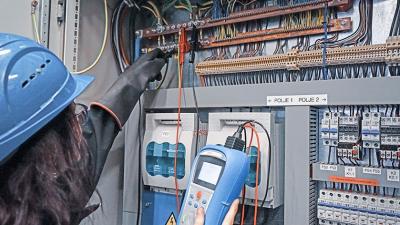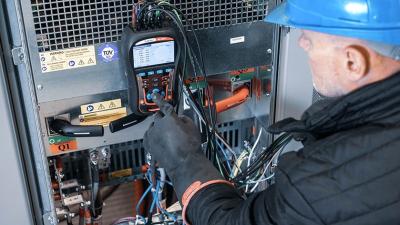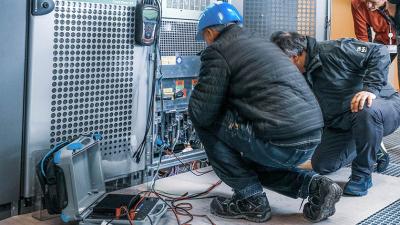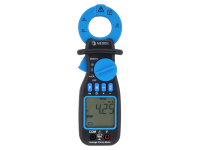Uninterruptible power supply in healthcare
Power supply and power distribution

A number of processes in a hospital cannot be interrupted by a power outage. Most have backup generators or another extra power source available, but they can take a while to start. UPS system is there to bridge the gap between outage and backup source coming online.
UPS is a battery or a battery system connected to the installation, intended to start powering the protected devices or circuits immediately the main power fails. They can also provide protection from power quality issues on the network. Response time is some milliseconds. There are three essential methods for its installation into the system: online, offline (standby) and line-interactive.
Offline system is the simplest and the cheapest, commercially offering up to 20 min working time and surge protection. Devices connected to it are working directly on the power supply. If the voltage falls below the predefined limit or rises above it, it switches to battery power and its DC/AC output.
Line-interactive system is similar, but contains an auto-transformer or a transformer with adjustable input and output. It can tolerate prolonged lowered voltage (a brownout) by increasing used current.
Online or double-conversion system is always connected to a rectifier and an inverter. If the power fails, the rectifier drops from the line and the batteries are nearly immediately online. When it returns, the rectifier starts charging the batteries. It provides very good protection from events on the network with double conversion acting as a buffer. It has higher initial cost, mainly due to the necessary strength of the rectifier. The rectifier can however cause a certain amount of current harmonics, since the current it draws is not sinusoidal. Most double conversion models come with some kind of filtering built-in. The most effective are integrated active filters. UPSs have to report their status to other devices. They can support any type of serial ports, an internet connection, or a proprietary protocol. They also perform and report regular self-check. Batteries are subject to a number of chemical effects and problems that can in some cases make self-checks insufficient. Deep discharge tests should be run periodically, but not too often, as they damage the battery to a small degree. Li-ion batteries are less sensitive both to chemical events and discharge damage.
Measurements
Measurements on the UPSs are made with power quality analyser like Metrel MI 2892. One has to check any possible state and transition in the system and check the state of the batteries. Tests are divided to pre-installation and combined. Pre-installation is the more thorough set of tests to be performed before connecting a new, sensitive load. It involves checking functionality, specifications, functionality under symmetric or asymmetric load, run test for 8 or 24 hours, transients when changing loads, turning it on or off under load, function during transition to battery operation and back, discharge test, function when hot-swapping batteries if available, and functionality of external bypass if available. Combined tests are run when UPS unit is in operation. They are similar to the pre-installation tests, but have to be performed at zero and at full load.















